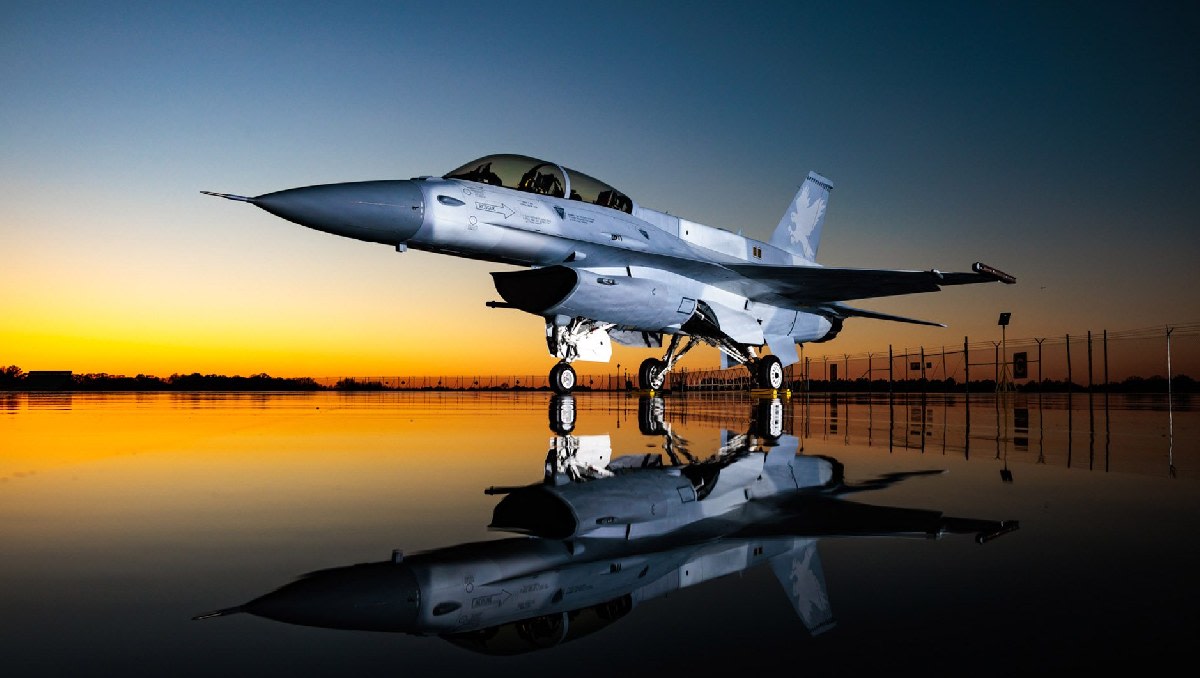
Orders for new Block 70/72 variants of the F-16 Fighting Falcon continue to roll in for Lockheed Martin as the aircraft rapidly approaches almost half a century since its first flight on 20 January 1974.
There are some intriguing questions around the American single-engine multi-role fighter as it retains its status as a preferred option for international militaries, an ageing but competitive aircraft and how much longer the production line has left to run.
The fourth-generation fighter aircraft has already flown an estimated 19.5 million flight hours, at least 13 million sorties, and retains an estimated 3,000 F-16s operating across 25 countries.
The F-16 made news earlier this year with the successful first flight of the F-16 Block 70 at Lockheed’s South Carolina site, it’s the first of 16 jets to be delivered to Bahrain.
There was also confirmation of a foreign military sale of 12 F-16 C Block 70 aircraft and four F-16 D Block 70 to Jordan and letter of offer from Bulgaria for an additional eight jets for its fleet.
In addition, Defense Advanced Research Projects Agency (DARPA) and program developers for the Air Combat Evolution program have tested AI software with an X-62A modified two-seat F-16 test aircraft at Edwards Air Force Base, California in December last year.
“That was a very proud moment for us as we flew the first F-16 produced in Greenville, South Carolina … and we’re on contract for 128 F-16s and we have some future scope for that number to go up to 148 pretty quickly,” said Lockheed Martin aeronautics executive vice-president Greg Ulmer.
“(Choosing the F-16 over the F-35) is really a customer preference … it really comes down to customer requirements. We see the F-16 as a stepping stone to F-35 because the human vehicle interface for the aircraft is based on an F-16.”
The newest Block 70/72 aircraft will be flown by at least five countries in the mid-2020s, according to Lockheed Martin.
It features advanced APG-83 AESA radar with greater situational awareness, flexibility and quicker all-weather targeting. It has a new, high-resolution Center Pedestal Display with colour moving maps, zoom functionality, the ability to switch information among displays, digital flight instrument data, and a colour/night helmet-mounted display. It also has Automatic Ground Collision Avoidance System which reduces controlled flight into terrain incidents, and an extended structural life to 12,000 hours.
Ulmer said integration and data fusion technology used in the F-35 would be available in the Block 70/72.
“There is a market for what we call 4.5 generation capabilities, it’s really customer dependent and I think it’s being validated with 128 aircraft on contract,” he said.
“Our philosophy really is the transition of the F-16 customer to an F-35 at some point in the future, but today, there’s a market for both, driven by customer requirements.
“From my view, the 4.5 generation F-16 is the best, most affordable force capability per dollar, that’s unmatched in the world relative to that capability from a 4.5 gen perspective.
“It’s going to be a very powerful four and a half generation aircraft but also be very affordable. Right now (production) through mid-2027, I think we’ll have nine deliveries this year out of Greenville, you’ll see us get to a rate of about four a month in mid-2027 and our intent would be that we sustain that rate as long as we can.”












